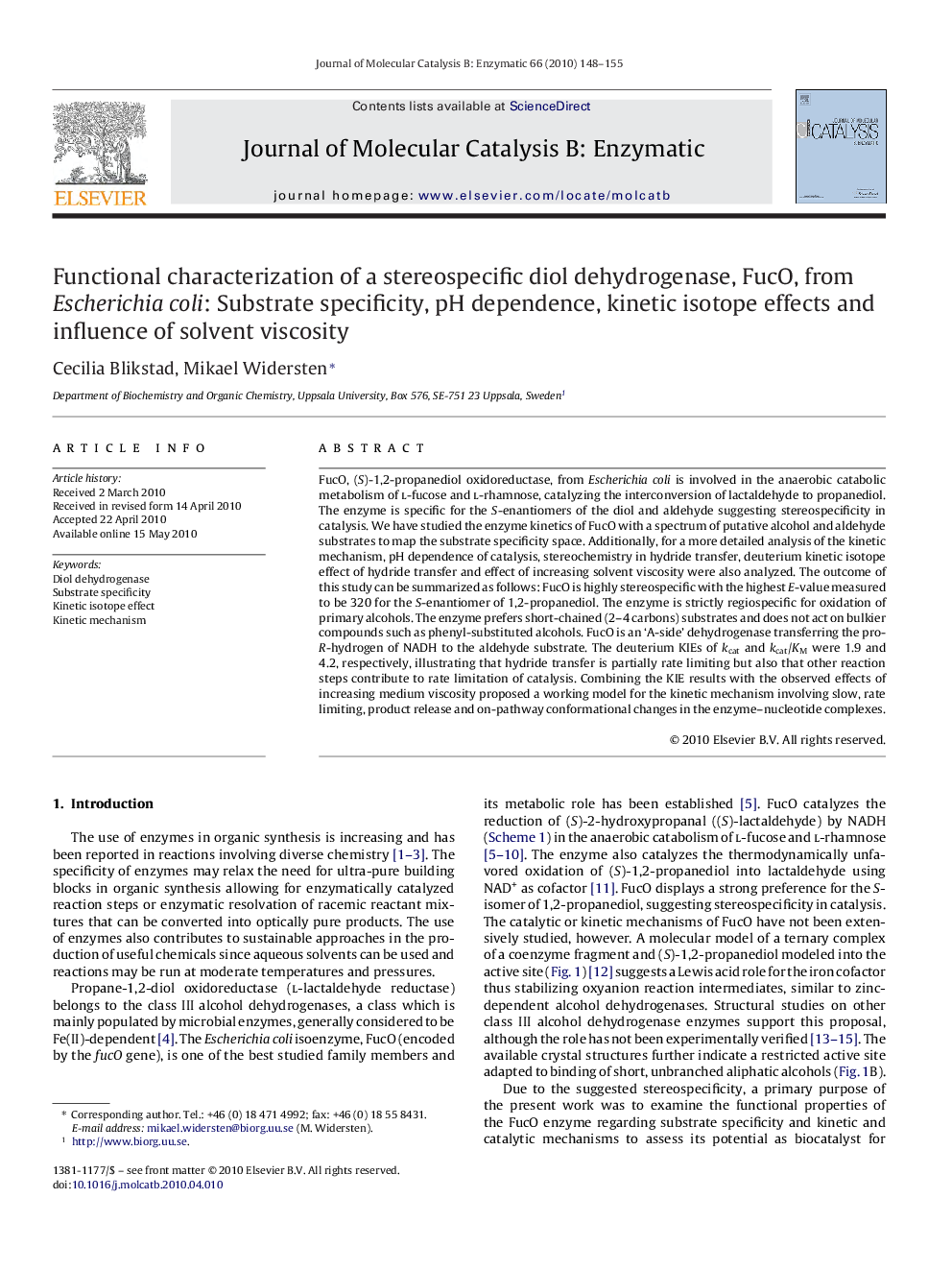| Article ID | Journal | Published Year | Pages | File Type |
|---|---|---|---|---|
| 70414 | Journal of Molecular Catalysis B: Enzymatic | 2010 | 8 Pages |
FucO, (S)-1,2-propanediol oxidoreductase, from Escherichia coli is involved in the anaerobic catabolic metabolism of l-fucose and l-rhamnose, catalyzing the interconversion of lactaldehyde to propanediol. The enzyme is specific for the S-enantiomers of the diol and aldehyde suggesting stereospecificity in catalysis. We have studied the enzyme kinetics of FucO with a spectrum of putative alcohol and aldehyde substrates to map the substrate specificity space. Additionally, for a more detailed analysis of the kinetic mechanism, pH dependence of catalysis, stereochemistry in hydride transfer, deuterium kinetic isotope effect of hydride transfer and effect of increasing solvent viscosity were also analyzed. The outcome of this study can be summarized as follows: FucO is highly stereospecific with the highest E-value measured to be 320 for the S-enantiomer of 1,2-propanediol. The enzyme is strictly regiospecific for oxidation of primary alcohols. The enzyme prefers short-chained (2–4 carbons) substrates and does not act on bulkier compounds such as phenyl-substituted alcohols. FucO is an ‘A-side’ dehydrogenase transferring the pro-R-hydrogen of NADH to the aldehyde substrate. The deuterium KIEs of kcat and kcat/KM were 1.9 and 4.2, respectively, illustrating that hydride transfer is partially rate limiting but also that other reaction steps contribute to rate limitation of catalysis. Combining the KIE results with the observed effects of increasing medium viscosity proposed a working model for the kinetic mechanism involving slow, rate limiting, product release and on-pathway conformational changes in the enzyme–nucleotide complexes.
